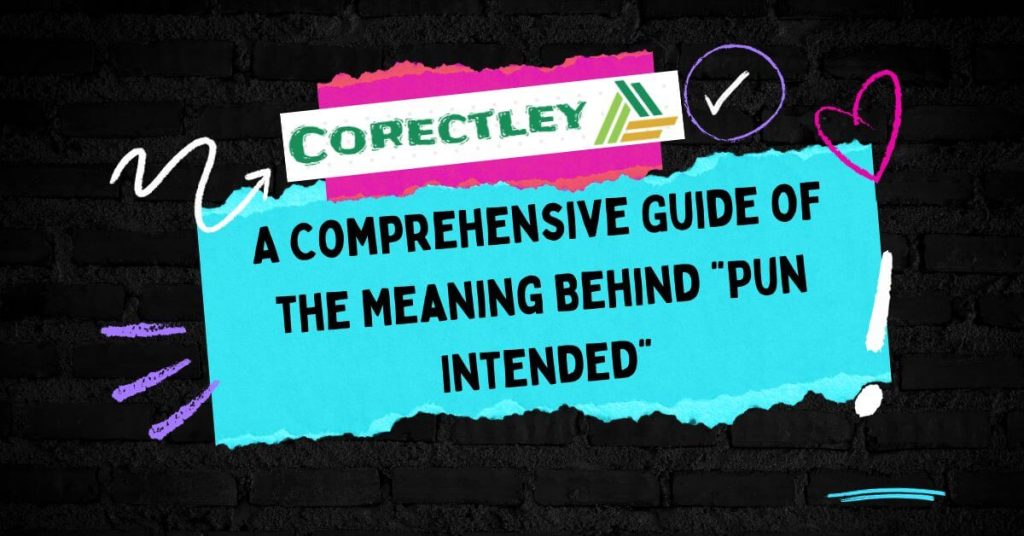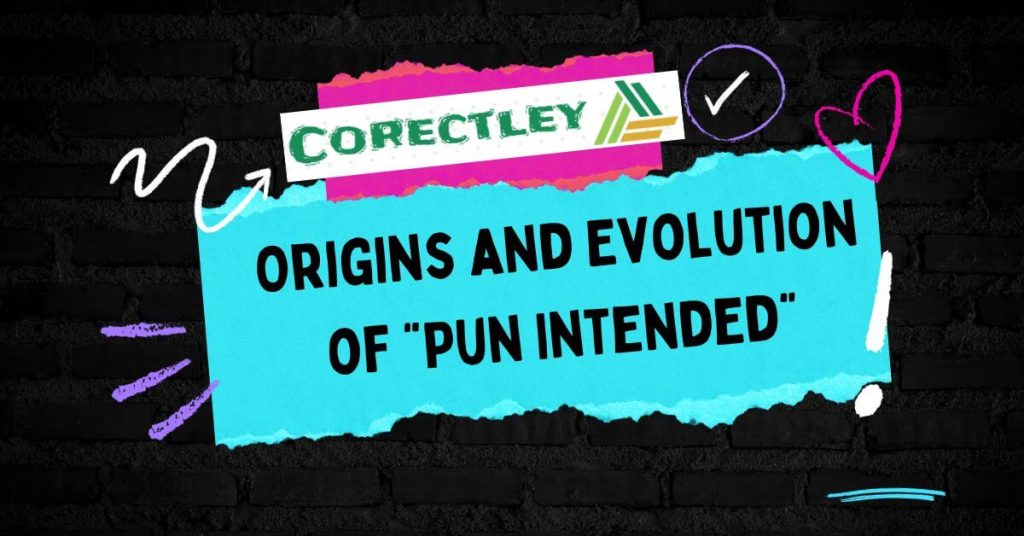Prior to digging into the particulars of “pun intended,” understanding the more extensive idea of wordplay is fundamental.
Pleasantry alludes to the utilization of words or expressions with different implications, sound examples, or semantic gadgets to make humor or inspire cunning.

It includes different procedures, for example, quips, risqué remarks, allusions, and clever word affiliations. From the beginning of time, it has been a predominant element in writing, satire, and ordinary language.
What does “Pun Intended” mean?
“Pun intended” is an expression used to make audience members or perusers aware of the presence of a joke intentionally embedded into an assertion or sentence.
By utilizing “Pun intended” in a sentence, the speaker or essayist recognizes the figure of speech and welcomes the crowd to see the value in the planned humor.
Jokes frequently depend on the utilization of homophones, homonyms, or comparable-sounding words to make a diverting or shrewd impact.
For example, an exemplary play on words may be, “I’m perusing a book about repulsive force. Putting down is inconceivable.”
Origins and Evolution of “Pun Intended”

The starting points of the expression “pun intended” can be followed back to the utilization of plays on words in writing and theater over the entire course of time. In Shakespearean plays, for example, jokes were a typical gadget for adding humor and pleasantry to the discourse.
Over the long run, the expression “pun intended” turned into a well-known method for noticing purposeful wit in composed works and spoken discussions.
As language and correspondence have developed, so too has the utilization of this expression, making it a conspicuous piece of our semantic scene.
Why You Should Use “Pun Intended” in Your Conversations
The expression “pun intended” fills numerous needs in correspondence.
“Pun Intended” acts as a cue
First and foremost, it goes about as a prompt, indicating to the crowd that a play on words has been intentionally integrated into the assertion.
This helps the audience or peruser to get the wit and value of the humor expected by the speaker or author.
“Pun intended” can add an element of irony or playfulness to a statement
This upgrades its general impact and draws in the crowd on a semantic level.
Whether utilized in easygoing discussions, composed works, or in any event, publicizing efforts, the expression adds to the pleasure and entertainment of language.
Social Varieties and Interpretations of the “Pun Intended” Expression
Language and humor shift across societies and the idea of it is no special case. Various dialects and societies have their own exceptional approaches to communicating comparable plans to “Pun Intended.”
For example, in French, the expression “jeu de mots” means “play of words,” mirroring the embodiment of wit.
Investigating these social varieties expands how we might interpret humor as well as features the all-inclusiveness of etymological inventiveness and the human interest with shrewd pleasantry.
Common Alternatives to “Pun Intended”

While “pun intended” is a generally perceived state, it’s not by any means the only method for showing the presence of a play on words. There are different other options and varieties utilized in various settings or locales.
For example, “no pun intended” is a partner expression that discredits any jokes inside an explanation, frequently utilized when the speaker wishes to explain that an assertion was not expected as a wit.
Different articulations like “pleasantry caution” or “signal the moan” fill comparative needs to “pun intended”, making the crowd aware of anticipating a joke or diverting pun.
What is the major difference between “Pun intended” and “No pun intended”
At the point when somebody incorporates the expression “pun intended” in their proclamation, it implies that they have purposely embedded a quip or wit for clever impact.
By unequivocally recognizing the joke, the speaker or essayist welcomes the crowd to perceive and value the shrewd statement with a double meaning. The utilization of “pun intended” adds a component of perkiness and signs that the assertion is expected to be silly or astute.
Model: ” I’m going to the dental specialist to have my teeth looked at. It will be a remarkable filling experience, pun intended.”
Then again, “pun intended” is utilized to explain that an assertion was not planned as a joke, in spite of the presence of a word or expression that may be deciphered thusly.
This expression is in many cases utilized when the speaker needs to abstain from any misconception or turmoil brought about by an unexpected quip.
By expressing “no pun intended,” the speaker is consoling the crowd that they didn’t mean to make a figure of speech and that any apparent quip is simply unplanned.
Example: ” I just purchased a book about repulsive force. It’s difficult to put down, no pun intended.”
“Pun intended” is utilized to cause to notice a purposeful joke, while “no pun intended” is utilized to explain that an assertion was not planned as wit regardless of a likely play on words. These expressions help to add clearness and forestall any accidental disarray or uncertainty in correspondence.